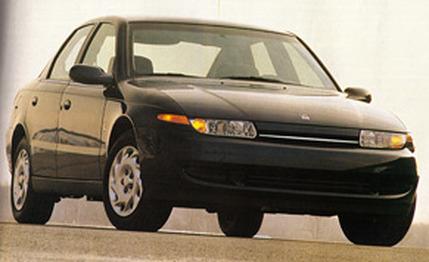
 Road Test
Road Test
After nine years of grappling in the small-car segment, Saturn is moving on up to one of the most crowded and competitive vehicle classes, the mid-size-sedan niche. Cars of this ilk are the everyday workhorses of cardom, and as our own John Phillips noted, "For every guy who proudly owns a Plymouth Prowler or a Panoz AIV, you'll likely find a mainstreamer in his driveway. It's the car upon which he expends absolutely no wax but upon which he relies for 90 percent of his driving."
With such a competitive class of cars -- at last count, there were at least 10 in the niche -- Saturn's jump up is no easy task. And don't forget that the two bestselling cars in the country, the Honda Accord and the Toyota Camry, dominate that niche. On the other hand, with such a large and obvious target, the Saturn folks knew what they needed to do -- build an inexpensive, reliable, comfortable, solid, roomy sedan. As it turns out, the new L-series lands smack in the middle in every respect.
Very loosely based on the Opel Vectra sold by GM in Europe, the new L-series gave us good vibes during a preview drive last summer (C/D, August 1999). Now that we've spent some more time in the car and the full pricing details are out, we're willing to stand by our initial impressions -- Saturn's mid-size-sedan effort is solid.
The L-series comes in three trim levels: base, LS1, and LS2. There's a wagon version as well, but it's not available in base trim. Feature and trim differences separate the base from the LS1 level. Both use GM's all-new 2.2-liter four-cylinder engine (see sidebar). The LS2 comes with a 3.0-liter V-6. Prices start at $15,450 for the base sedan and climb to $21,800 for an LW2.
Our test car was a four-cylinder LS1 sedan with a five-speed manual transmission. With all the options we'd want, it stickered out at a reasonable $18,280. The car came with traction control, anti-lock brakes, a power driver's seat, power windows, a CD player, cruise control, and an air conditioner. Although we thought our LS1's price was quite reasonable, it was not the cheapest of its peers. Direct cost comparisons are almost impossible since every manufacturer packages options differently, but you can get several well-equipped four-door sedans -- with a V-6 engine -- for the same price, or even cheaper, than our test Saturn. The Hyundai Sonata and the Chevy Malibu come to mind. Honda Accords and Toyota Camrys, however, cost a bit more than our Saturn. The bottom line is that the Saturn is well-priced, but it's not the new darling of the Sam's Club set. And let's face it, how much does an extra five hundred bucks on the sticker factor into a monthly payment?
Nothing about the interior yells "Cheap!" Neither is it lavish. The seats are firm, and the fabric feels soft and durable. The dash and the center console are bare-bones simple, but the switchgear is easy to use and we couldn't find a single ergonomic fault.
We were especially pleased with the new engine, which amounts to a quantum improvement over the previous Saturn four-cylinder and, for that matter, any four-banger that's ever come with a GM invoice. The 137-hp engine and the car's five-speed manual tranny propelled our 2940-pound test car to 60 mph in 8.7 seconds and through the quarter-mile in 16.8 seconds at 84 mph, which is about average for the class.
This engine is not a screamer by any stretch. The redline is marked at 6500 rpm, but a rev limiter cuts in 50 rpm early. What does this say about Saturn? It says weird. Although the engine will happily pull all the way to the rev limit, you can feel the power fall off soon after 6000 rpm. There's excellent low-end torque, though, and one need not abuse the clutch to get the LS1 moving from a standstill.
The five-speed tranny is from a Saab 9-3. There's some irony here. Saab engineers need to have a look at the Saturn's shift linkage. Whereas both the Saturn and the Saab use a rod linkage rather than a cable setup, the Saturn's shifter feels more direct and has less sloppiness than the Saab's. The clutch is likewise a slick piece, with buttery takeup that makes for smooth shifting.